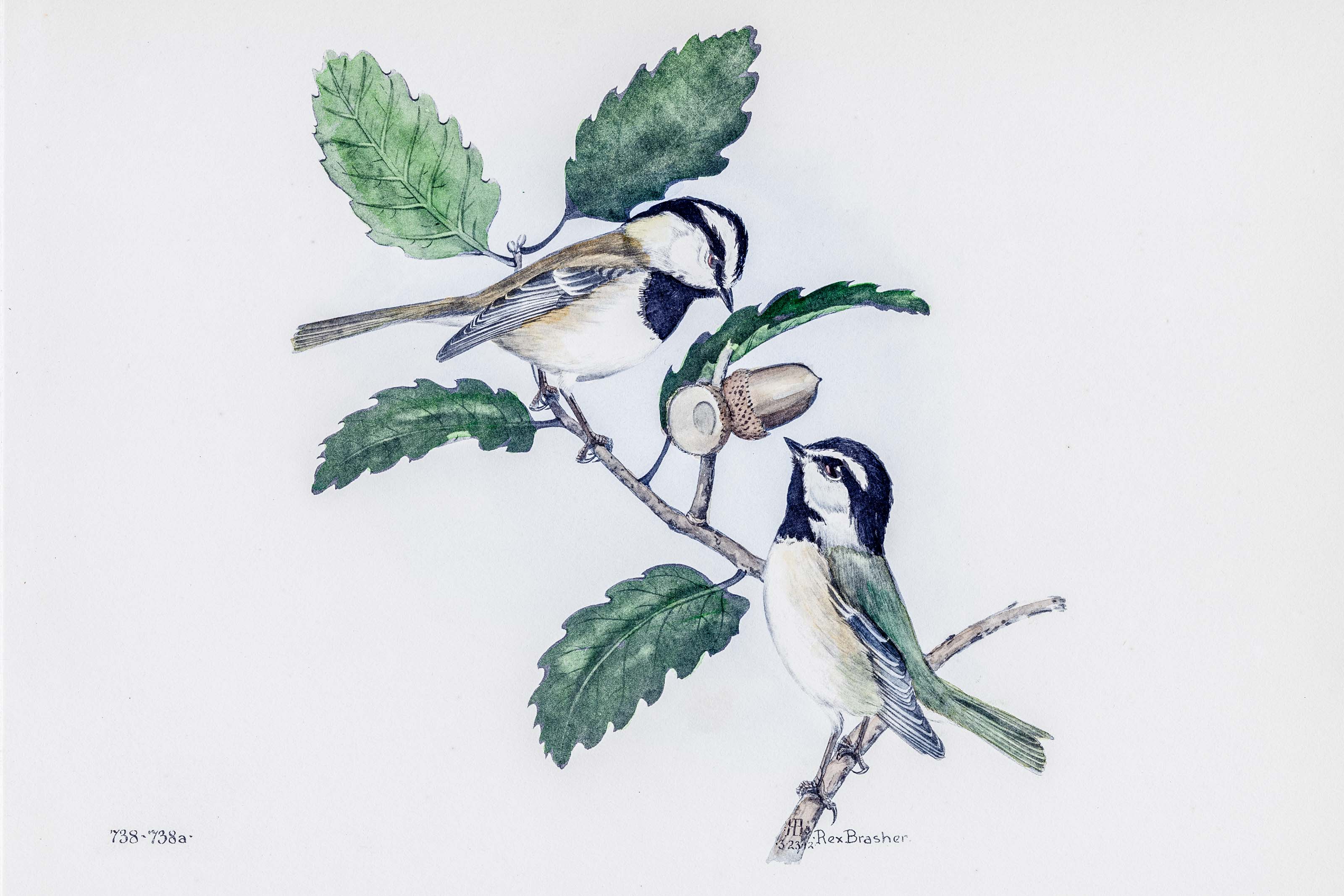
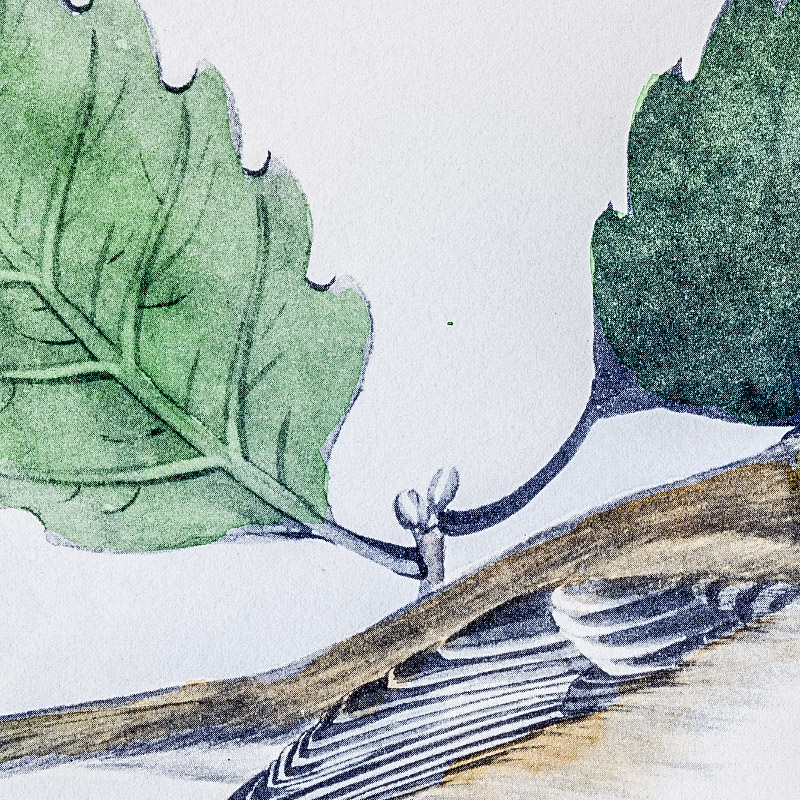
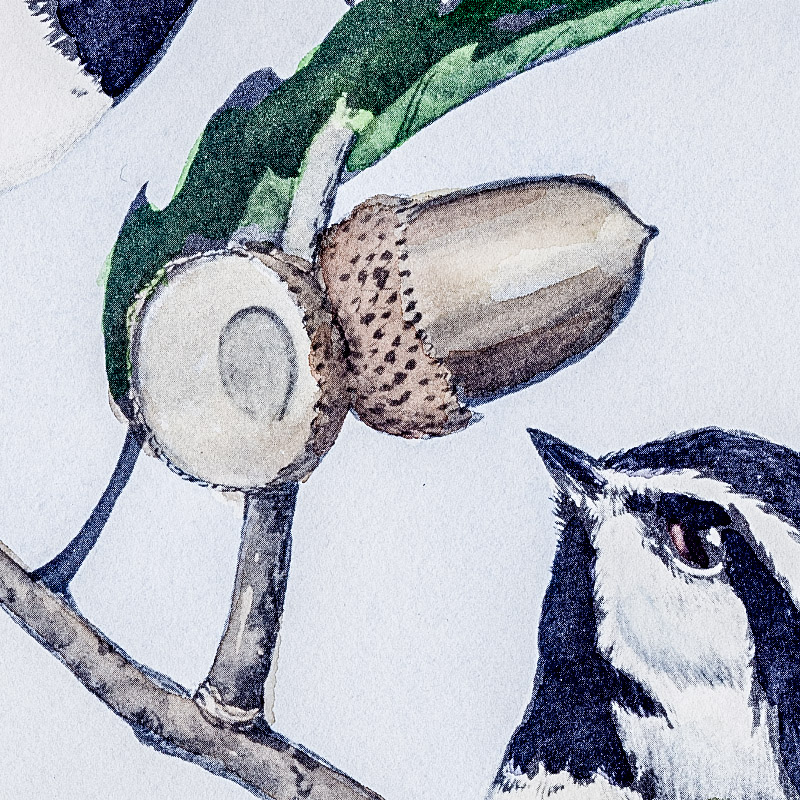
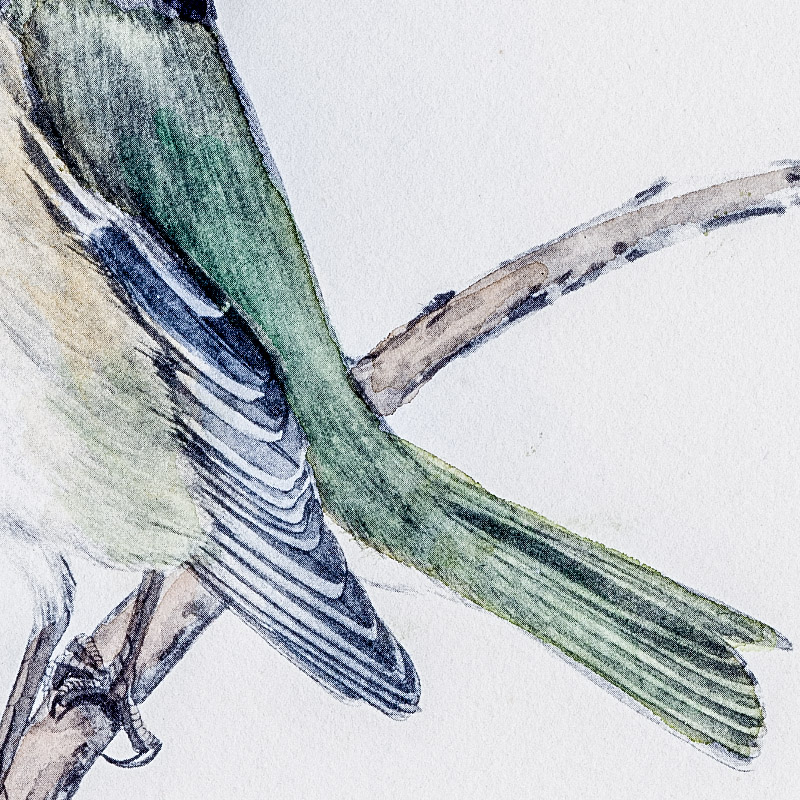
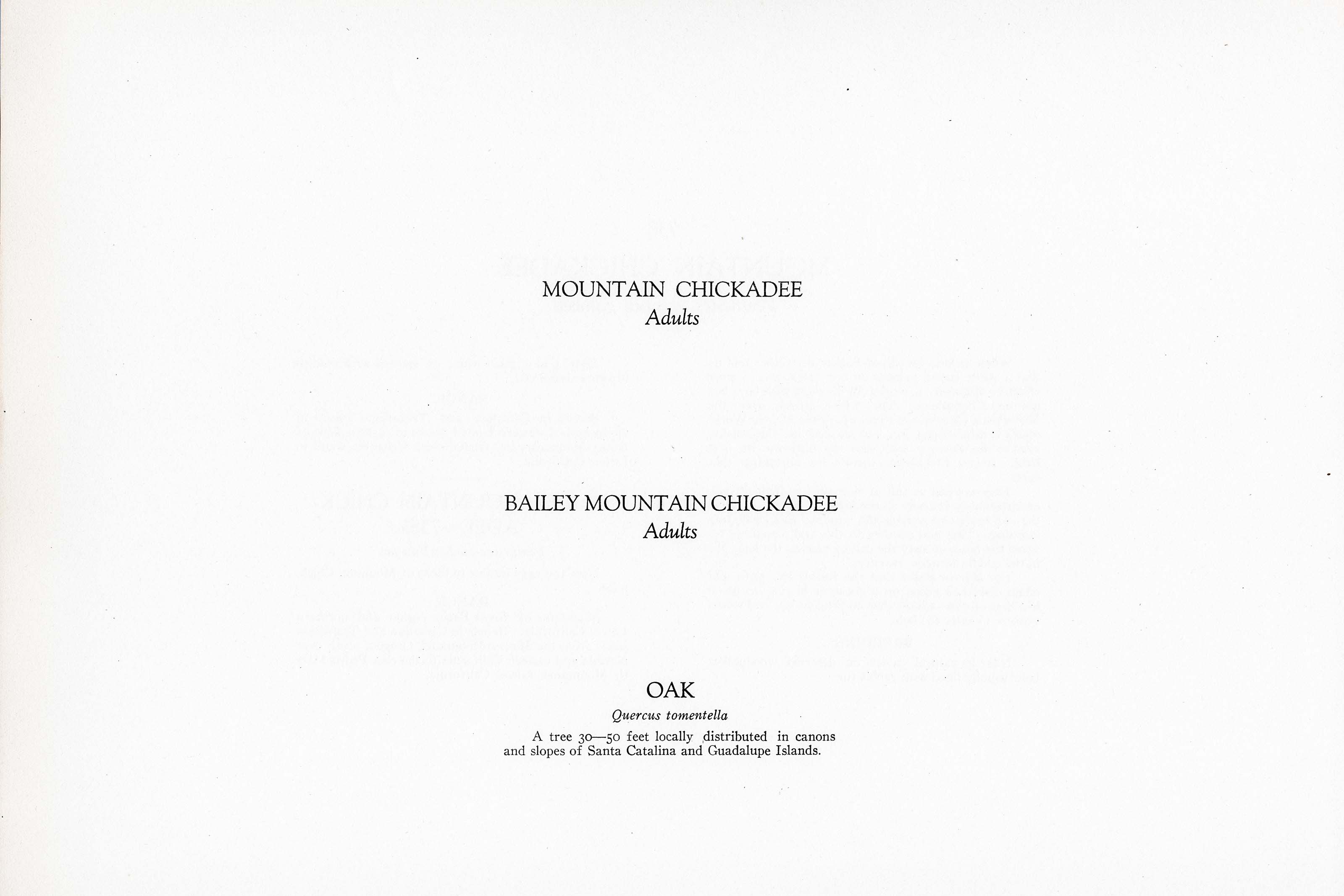
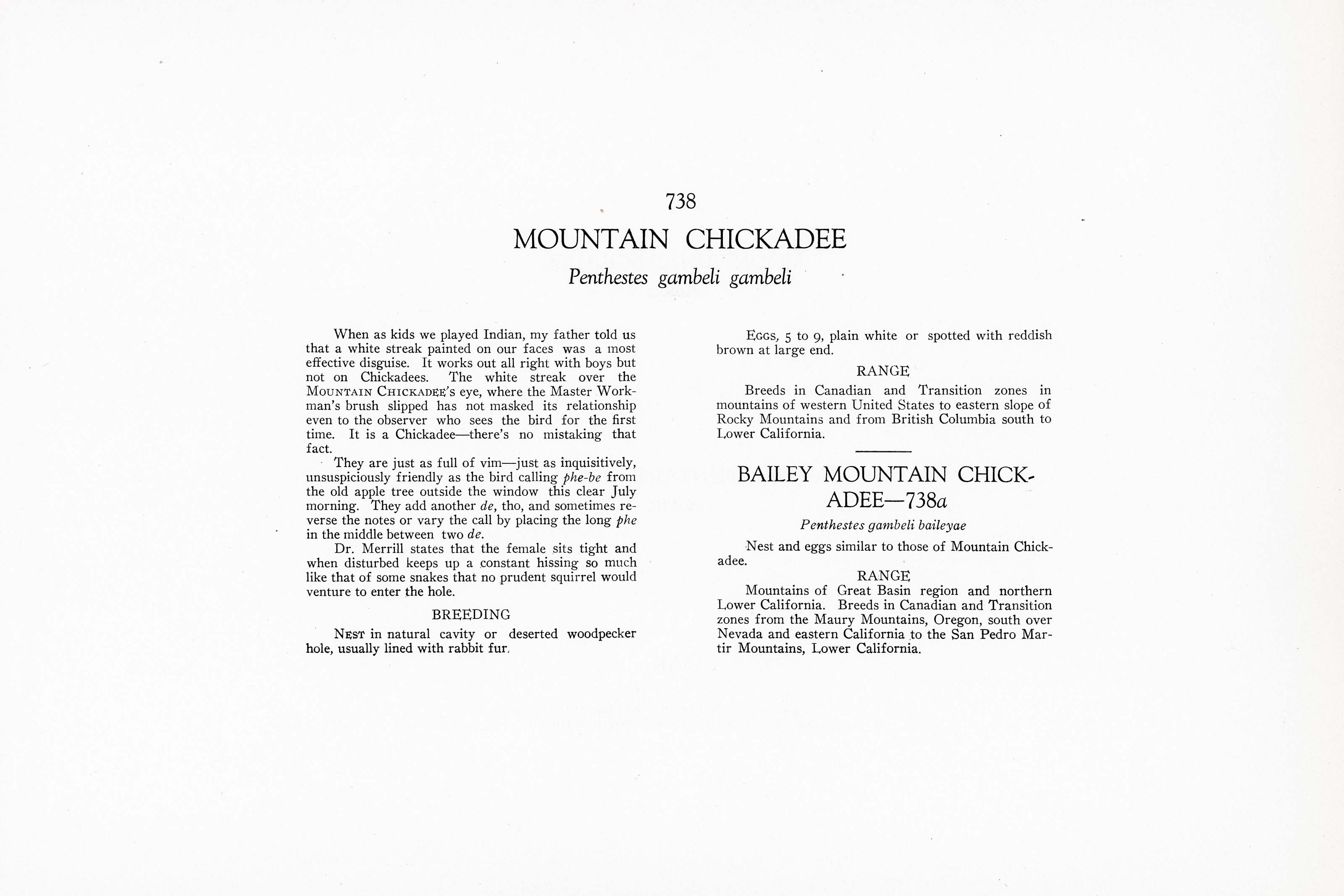

1912
1929
12
738-738a
A team of dedicated board members, volunteers, and student interns has published every page in Volume 9. This volume includes 360 images of paintings and lyrical descriptions of birds, now available online for everyone to enjoy anywhere in the world. This is a monumental task. Each volume requires approximately 400 hours to photograph, edit, transcribe, catalog, and publish online. We need your support to complete this work.
If you're tech-savvy, have a good eye, are meticulous with details, and love structured data, please consider volunteering by emailing us at hello@rexbrasher.org.
We encourage all bird lovers and supporters to consider a monetary donation to support our mission to make Rex's work available for everyone. You can provide a one-time or recurring donation online.
When as kids we played Indian, my father told us that a white streak painted on our faces was a most effective disguise. It works out all right with boys but not on Chickadees. The white streak over the MOUNTAIN CHICKADEE'S eye, where the Master Workman's brush slipped has not masked its relationship even to the observer who sees the bird for the first time. It is a Chickadee — there's no mistaking that fact.
They are just as full of vim — just as inquisitively, unsuspiciously friendly as the bird calling phe-be from the old apple tree outside the window this clear July morning. They add another de, tho, and sometimes reverse the notes or vary the call by placing the long phe in the middle between two de.
Dr. Merrill states that the female sits tight and when disturbed keeps up a constant hissing so much like that of some snakes that no prudent squirrel would venture to enter the hole.
NEST in natural cavity or deserted woodpecker hole, usually lined with rabbit fur.
EGGS, 5 to 9, plain white or spotted with reddish brown at large end.
Breeds in Canadian and Transition zones in mountains of western United States to eastern slope of Rocky Mountains and from British Columbia south to Lower California.
Nest and eggs similar to those of Mountain Chickadee.
Mountains of Great Basin region and northern Lower California. Breeds in Canadian and Transition zones from the Maury Mountains, Oregon, south over Nevada and eastern California to the San Pedro Martir Mountains, Lower California.
A tree 30–50 feet locally distributed in cañons and slopes of Santa Catalina and Guadalupe Islands.